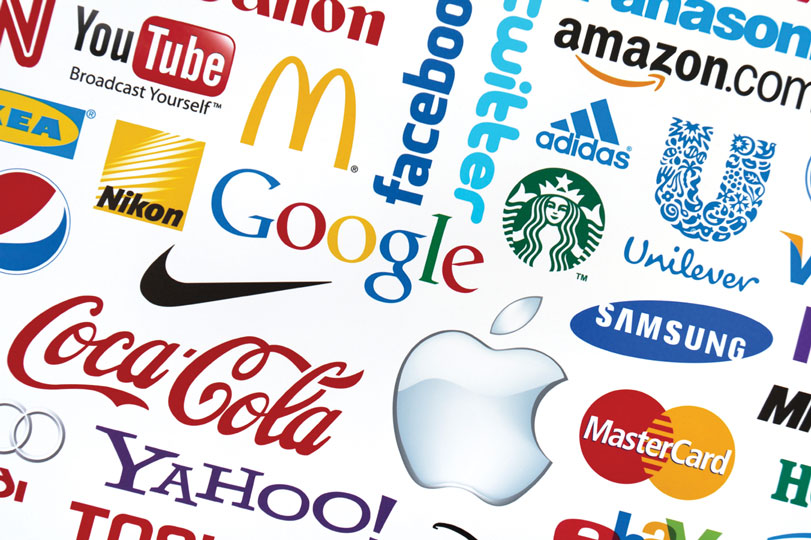Though an act of pure fiction, there were three magical minutes of television that reminded many of us who make our careers in the world of branding why we do what we do. Don Draper, the dashing but often mysterious protagonist of Mad Men, an American drama series about advertising in the 1960s, pitched Eastman Kodak to become a new client of his agency, Sterling Cooper. Kodak had given him a challenge: tell us how we should sell a wheel-based slide projector. After a few pleasantries, Draper demonstrates to his future client that it isn’t the technology that will sell the product. It’s the emotional connection people will have with what that technology does. As he proceeds to show slides of his own family, he asserts that our love for nostalgia will make us view Kodak’s product as a kind of time machine—a device that allows us to reconnect with our most cherished memories. It is not a wheel, Draper says, it is a carousel.
A half-century after this fictitious moment of profound insight, the branding trade is bigger than ever. There are far more brands competing for our attention today than there has ever been before in human history. Added to this leap in scale and market activity is a seismic change in the technologies that enable brands. A layman without any design training or particular talent can easily create a logo on a computer, affix it digitally to a product, service or company, and claim to have a brand. In fact, the concept of branding is so pervasive that it has extended to the idea of personal branding. Hundreds of books and thousands of consultants are working very hard to convince each and every one of us that we must develop our own personal brand in order to find the success we seek in life. Should it surprise anyone that the concept of brand is becoming meaningless? It’s the kind of jargon that makes most senior executives roll their eyes.
Just as Don Draper delivered a compelling truth to Kodak by advising that what matters was not the technology, but what the technology enables, today’s business managers need a reality check. Brands only accrue value through the delivery of exceptional experiences, not through the execution of exceptional marketing or clever promotional buzz. When I say this to many of my colleagues, they consider it blasphemy. I don’t mean to discredit the value of smart marketing, but to emphasize the point that brands are not the exclusive product of marketing. Any business that hopes to build a valuable brand by focusing all of their efforts on the flawless design of advertising and promotion is taking a great risk. While that flawless marketing power may generate awareness, interest and affection, it will not bring the customer back if the product or service fails to deliver on its promise. While brilliant marketing might very well make employees proud to have the company on their resume, it won’t keep them in their jobs for very long if they don’t believe in what they’re doing day in and day out; if they don’t believe that the company’s products and services actually deliver against the promise of the marketing hype.
[ms-protect-content id=”9932″]Branding is a strategic discipline. You cannot have a strong brand without employing the discipline of real branding, which influences much more than marketing campaigns. The discipline of real branding should be the domain of every CEO. It should guide decisions made by the entire C-suite. The strongest brands in our culture today practice this discipline, even though they may not always call it branding. It doesn’t matter what they call it: the substance is the same and can be quantitatively linked to the attachment customers have for the brand.
To illustrate what I mean, let’s travel back in time to one of the archetypical (but not entirely accurate) origin stories of modern branding. Many historians suggest that the modern use of the word branding is a nod to the cattle trade of the American west in the 19th century. Ranchers needed a way to keep track of the herds so they branded them with a distinctive mark that protected their property rights. Imagine for a moment that you and I are standing in front of a healthy unbranded steer. We both admire its breeding, its obvious care, and its individual physical structure. This cow will undoubtedly produce great steak, and we’re both willing to pay a premium to purchase it. Now, imagine that the cow is branded right in front of us with a beautifully designed mark. Would you or I be willing to pay a premium over our previous estimate because of the mark? The answer could very well be yes, but it is doubtful the premium we’d be willing to pay has anything to do with the design of the mark. Instead, we might be willing to pay a premium because the mark is the signature of a rancher who is renowned for his cattle stock. Perhaps his stock is in such demand that there is a demonstrable market shortage, which makes both of us willing to bid up the steer. The brand mattered in this instance, but it mattered because of our expectations. The mark changed our expectations above what we had observed about the cow when it was unbranded. This is the real means by which a brand creates value. Our collective experience with a brand or our perception of what to expect in an experience with the brand is what actually affects our future purchase behavior.
There are five components to the strategic discipline of branding. These components should be familiar to any senior executive. They are: research & development, operations management, capital investment, human resources management, and marketing. Let’s examine how each of these components contributes to a brand’s ability to deliver exceptional experiences that live up to the brand’s promise.
A brand-additive development process
Most research and development processes are decoupled from brand strategy. This is especially true for technology companies. To be fair, the pace of technological innovation is so rapid and unpredictable that adding another layer to an already compressed development cycle isn’t prudent for most companies. History has proven that some of the most innovative products surface by accident. For many companies, the R&D team discovers or acquires something new and innovative, and then the rest of the company tries to figure out what to do with it. To be honest, this approach sometimes leads to the birth of new brands or the revitalization of tired brands.
However, there is another function of R&D that is part of the strategic discipline of branding. It’s the function that thinks version x.0. In other words, some of the strongest brands proactively invest in improving the underlying product or service that is branded. In many cases, they proactively invest to innovate the entire company that is branded. When a brand’s promise is clearly defined, it generates two sets of criteria: “must win” and “choose to lose.” The “must win” criteria are the measurable attributes of the brand that are mission-critical to delivering great experiences. These attributes might be functional, emotional, or self-expressive, but they’re always concrete. Thus, every innovation at Apple must win on design. Elegant design is an attribute that is sacrosanct for the brand. The “choose to lose” criteria are attributes that the brand purposefully neglects or manages to minimum standards of satisfaction because investing in these attributes might actually impair the brand’s ability to deliver the “must win” criteria. For example, Apple isn’t cheap and it often doesn’t provide all of the options that a consumer might otherwise expect from a product in the category. Apple deliberately chooses features and functionality that it will not include in order to sustain its brand value through the delivery of features and functionality that make it the clear winner. This discipline can provide a compelling guideline for R&D teams. When you know what you must win, and you know what you don’t have to address, you are apt to be more focused in the allocation of your scarce R&D resources. While a good R&D team will always create a margin of resources for “blue sky” thinking and allow for the possibility of happy accidents, strong brands dedicate a fair amount of their time towards imagining the evolution of their “must win” attributes.
Brand-friendly capital investment
I began my career at The Walt Disney Company when it was under the dynamic leadership of Michael Eisner. At the time, Disney was revered in the business world for its ability to “synergize” the work of multiple, autonomously managed business units. While most of the press focused on the marketing practices that led to Disney synergy, a considerable amount of the brand magic occurred in the finance and strategic planning departments. Disney allocated capital to divisions for investment like a bank. Every year, when divisions presented their long-term plans to Eisner and the C-suite and asked for funds to bankroll their initiatives, they had to prove how those initiatives would add to Disney’s brand value across divisions. While the company famously mandated 20% ROE from every business unit, it also reminded those business units that they were part of a larger organism, and capital would be allocated based on how a division’s individual success would benefit the entire company beyond financial gain. And on many occasions, the leadership was willing to relax the ROE requirement if the brand synergies from the investment were promising.
It must be noted that many critics have cited this very process as the root of the troubles Eisner encountered towards the end of his career at Disney. And it’s no coincidence that the strategic planning department retired when Michael Eisner retired. But the process actually worked well when it was carefully orchestrated to balance financial objectives with brand objectives. It failed when the brand criteria was far more subservient to the financial criteria. Many veteran division leaders believed that they were prevented from developing new products and experiences that would have strengthened the Disney brand because the financial case dominated.
Capital investment decisions are one of the most profound arbiters of brand strength. It is usually beneficial to have a fair amount of productive conflict around these decisions, and the best brands weigh tangible measures of return on investment against highly intangible criteria such as the components of goodwill. Often, the senior leadership of a company has to make tough calls that have the long-term interest of the brand in mind. These leaders are rarely thinking about marketing strategy. They’re thinking about the core benefits of the brand and how their investment will sustain or enhance the bond between the brand and its core customer audiences.
Finally, capital investment should play an important role in decisions relating to brand extension. If left purely to the marketing team, decisions to extend a brand or launch a new brand will be driven by consumer dynamics. In other words, marketers tend to think about brand extension through the logic of the consumer mind—how easily will a consumer consider an existing brand in a new category or market. This is the foundational art and science of brand architecture, and it matters. But brand architecture decisions have financial implications. It costs more to manage multiple brands. Over-zealous brand extension can lead to brand dilution, which can impair the earning power of venerable brands. The best brands realize this and incorporate the required capital expenditure to support extension or launch activities into the brand management process.
The brand devils are in the details of operation
Here in the United States a new and relatively small brand launched this year that has caught a lot of attention. The Dollar Shave Club is an online service with a very simple concept: a subscription service that delivers inexpensive but high-quality razor blades to your door every month. Most of us wouldn’t imagine a razor blade business to be very sexy. Yet, a humorous online video that launched with the service in March went viral in less than 24 hours and has accrued nearly 5 million views as of the date of this writing. There are national television shows that have smaller viewing audiences.
Since the service launched, the business has grown rapidly and the reason has very little to do with the appeal of the video. It has to do with the service experience. The Dollar Shave Club makes it incredibly easy to be a customer. The website where customers go to subscribe is intuitive and fun. Customers choose from one of three blade options, all the while being entertained by witty instructions that are also clear and brief. Orders ship on time in packaging that is cleverly branded, compact and just as easy to use. Interactions with the support team are friendly and efficient, with quick responses to inquiries or service issues. Every part of the experience is unified, and every part of the experience is consistent in its approach.
I had the opportunity to meet Michael Dubin shortly after the brand launch. I asked him about new product introductions. He told me they’ve thought about some extensions but he said they would not launch one of them until the existing service model is perfected. Dubin understands a critical driver of brand value: that the service experience is only as strong as the weakest link. To be a great brand, a viral video is not enough. Dubin focuses all of his attention on sweating the service operation, and he’s succeeding.
Sadly, this is rarely the case. Many great ideas are plagued by the antithesis of real branding. Instead of meeting or exceeding the expectations set by the brand promise, these brands over-promise and under-deliver. This is the single greatest reason why I get agitated when managers refer to branding as the sole function of the marketing department. You simply cannot have a brilliant brand without brilliant service operations. The brand and the service operation are inextricably linked, which is why every manager should be concerned with the question: can we deliver on the brand promise?
Human resources and the real target for brand campaigns
When I discuss branding with business managers, the conversation often veers into a discussion about campaigns; advertising campaigns to be more precise. Certainly, advertising is an important expression of a brand, and it is necessary to generate demand and set brand expectations with customers. Yet, advertising is only part of the campaign picture. Some of the best brand campaigns are focused inward, towards the people who actually bring the brand to life and make it possible for it to deliver on its promise.
The strongest brands exercise their branding discipline by making the brand an organic part of recruitment, retention and development. As a recruiting tool, the brand becomes both a magnet for talent and a screening device for selecting the best employees. Brands like Zappos won’t hire an employee if they don’t believe they are a strong fit for the brand’s culture. They hire based on a candidate’s potential to deliver a quality brand experience. These tight-knit brand cultures don’t hesitate to dismiss a candidate for their lack of fit, even if they are a proven performer. Last year, one of my clients described a situation in which a veteran senior executive was being recruited for an important position within their company. This candidate was dismissive with some of the brand’s front-line personnel. When word got back to the CEO of the company, the candidate was taken out of consideration. When I asked how hard that was, the answer I got back was surprising. “Not hard at all. If someone can’t behave in a branded way in an interview, they certainly won’t do so when they’re six months into the job.”
Strong brands also realize that they must retain the best people, and brand is an asset that is often under-utilized. The fact of the matter is that many employees want to be proud of the brand they serve. The more that senior leaders can emphasize the purpose of the brand—why the brand exists and what it does that matters—the more likely people will be motivated to perform at their highest levels and stay with the company.
Finally, a strong brand can become a valuable tool for developing talent within a company. When a brand is truly alive, it prescribes behavior. It inspires improvement. And, it provides a cultural norm that produces remarkable economic value. Sadly, the annual performance review at many companies has marginal brand criteria, or the criteria that is included is so obtuse that neither the employee nor their manager know how to process the information. Brands should use the employee development process to assert the promise of the brand and illustrate how it is brought to life in the touch points of brand experience. More importantly, every employee should know how their job connects to relevant touch points.
And, yes. Marketing.
Of course, marketing is also an important part of branding discipline. I’ve intentionally spent the least amount of time explaining its role because marketing is the natural link for most managers when they think of branding. Yet, in this regard, it is high time that managers understand the checks and balances system that exists between a brand promise and a marketing campaign. Too often, brand marketing decisions are influenced by fads. Marketers worry too much about what’s trending, or a competitor’s successful campaign, or the instant opinions of their consumer audience. To quote Jack Kerouac, “great things are not accomplished by those who yield to trends and fads and popular opinion.”
Strong brands very often have great marketing. When their marketing is at its best it serves as a beacon. It signals a story that will unfold in the brand experience. It sets the right expectation—one that is very appealing, but also one that can reliably be executed when the consumer chooses to call on the brand. The brilliant marketing campaigns—the ones that we talk about years after they launched—are the ones that reveal a compelling truth about the brand, never a fiction. That’s why Don Draper’s fictitious pitch to Kodak would have worked in real life. Instead of using a fun-house mirror to distort the realities of the product to the consumer’s liking, he used a shaving mirror to frame and illuminate the part that mattered the most.
About the author
Laurence Vincent is Head of The Brand Studio at United Talent Agency and the author of Brand Real: How Smart Companies Live Their Brand Promise and Inspire Fierce Customer Loyalty (AMACOM). Over the past two decades he has developed brand strategies for some of the world’s most beloved brands, including Coca-Cola, Disney, Four Seasons Hotels, MasterCard, Microsoft, and the National Football League.
[/ms-protect-content]




































